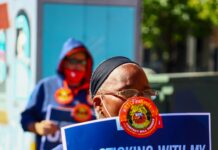The current United States economy can be viewed in both positive and negative ways. But one of the most serious problems is the widening income gap between the wealthiest Americans and nearly everyone else. Statistics show that job creation has increased and gas prices are going down, both of which help people throughout the income spectrum, but the disparity between the fabled 1% and everyone else is troubling, according to various sources.
This situation has been likened by some to the Gilded Age of the late 1800s, and similar to circumstances brewing prior to the Great Depression. However, it may be even more glaring now, due to how the media plays up the haves and the have-nots.
Among the issues pertaining to income inequality are:
1. This inequality hurts educational opportunity. College tuition is rising and many public colleges are impacted. They cannot offer as much financial aid and often hike their fees. More and more state and city colleges are taking non-resident students because they pay more, which squeezes out locals who would benefit from the relatively lower tuition. Related to this, many students are finding it hard to cope with the borrowing they need to pay for school.
2.
Young adults are not buying homes and cars in as great a number, due to stagnating salaries and in many cases, paying off student loans. This is a further drag on economic recovery, when the young do not invest in homes and transportation.
3. Education, infrastructure and medical/social programs suffer at the state level because many of the wealthiest individuals shield much of their money from taxation. When infrastructure suffers, especially roads, bridges and public transportation modes, these in turn impact businesses when they ship and receive goods.
4. There is a reduced share of what we consider middle-skill jobs and career tracks. Fewer factory jobs and more service jobs do not often benefit the families at the lower end of the scale.
5. In some cities, with New York City a prime example, the cost of housing has been rising greatly, forcing many workers to move out and further away from their jobs in the city.
These problems are not new, but the acceleration is glaring. Ultimately this does not just impact the poor, but also the working and middle class. Perhaps many ultra-wealthy people do not realize this, or they shake it off. Sadly, many in the more common income brackets also do not realize how bad this is. Answers are not simple and many are not popular but among the ways we may be able to ease the pain are:
1. Redistributing income taxes and benefits. This obvious but not always popular policy mindset is often maligned with cries of “Socialism!” but it is a common sense way to deal with the gap.
2. Putting more money into education and re-training programs is an investment that usually has long-term benefits. But again, the government, at all levels, needs funds to achieve this.
Income inequality needs to be tackled, and people at all economic levels need to reckon with it. Politicians need to assert this, and the very wealthy need to see that it is also in their best interest to help those less fortunate.
Let us know your thoughts at the Liberal America Facebook page. Sign up for our free daily newsletter to receive more great stories like this one.
Ellen Levitt is the author of The Lost Synagogues of Brooklyn (2009), The Lost Synagogues of the Bronx and Queens (2011) and The Lost Synagogues of Manhattan (2013). (And hopefully a book about NJ one day, if her publisher gives the green light.)







